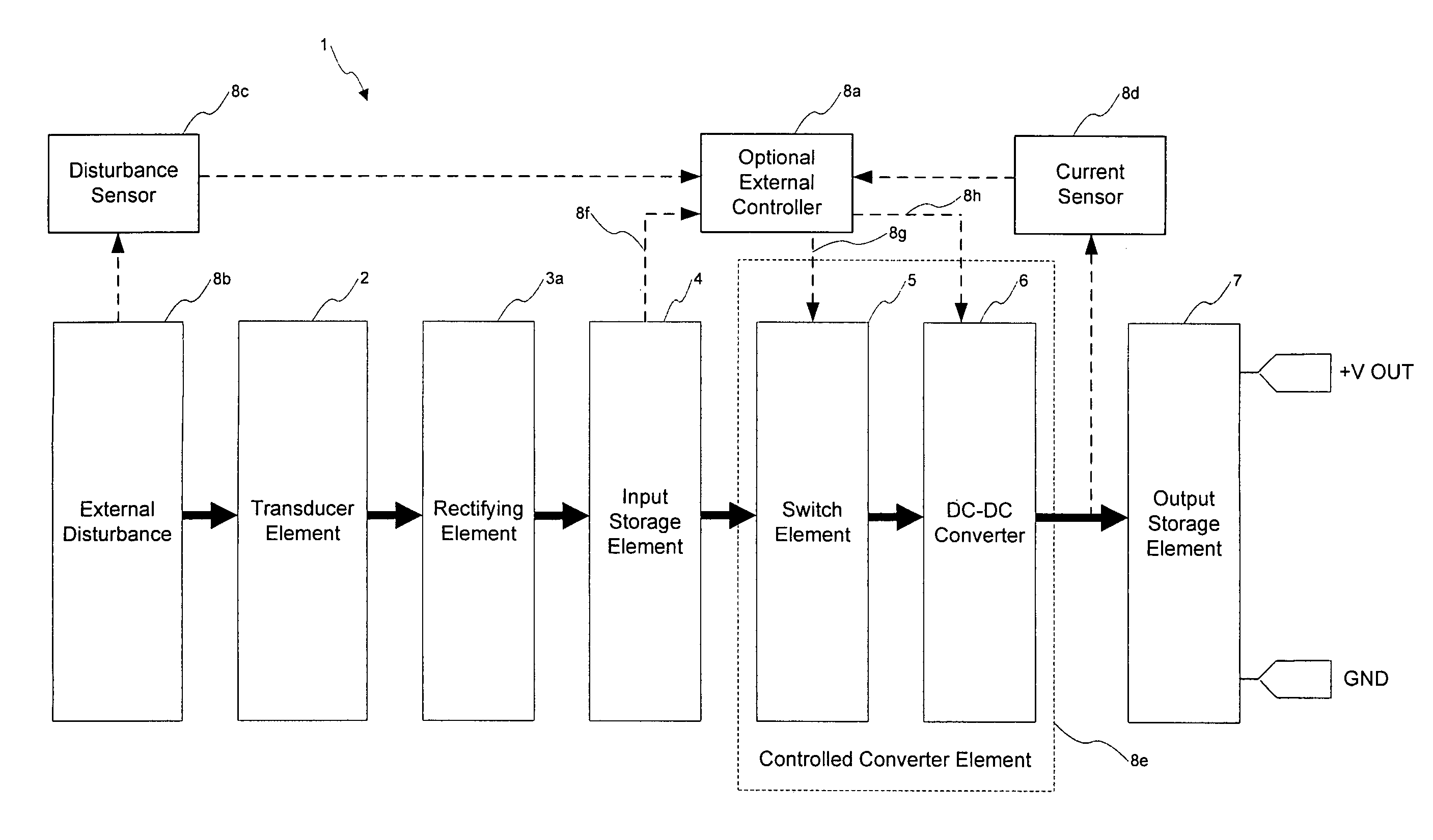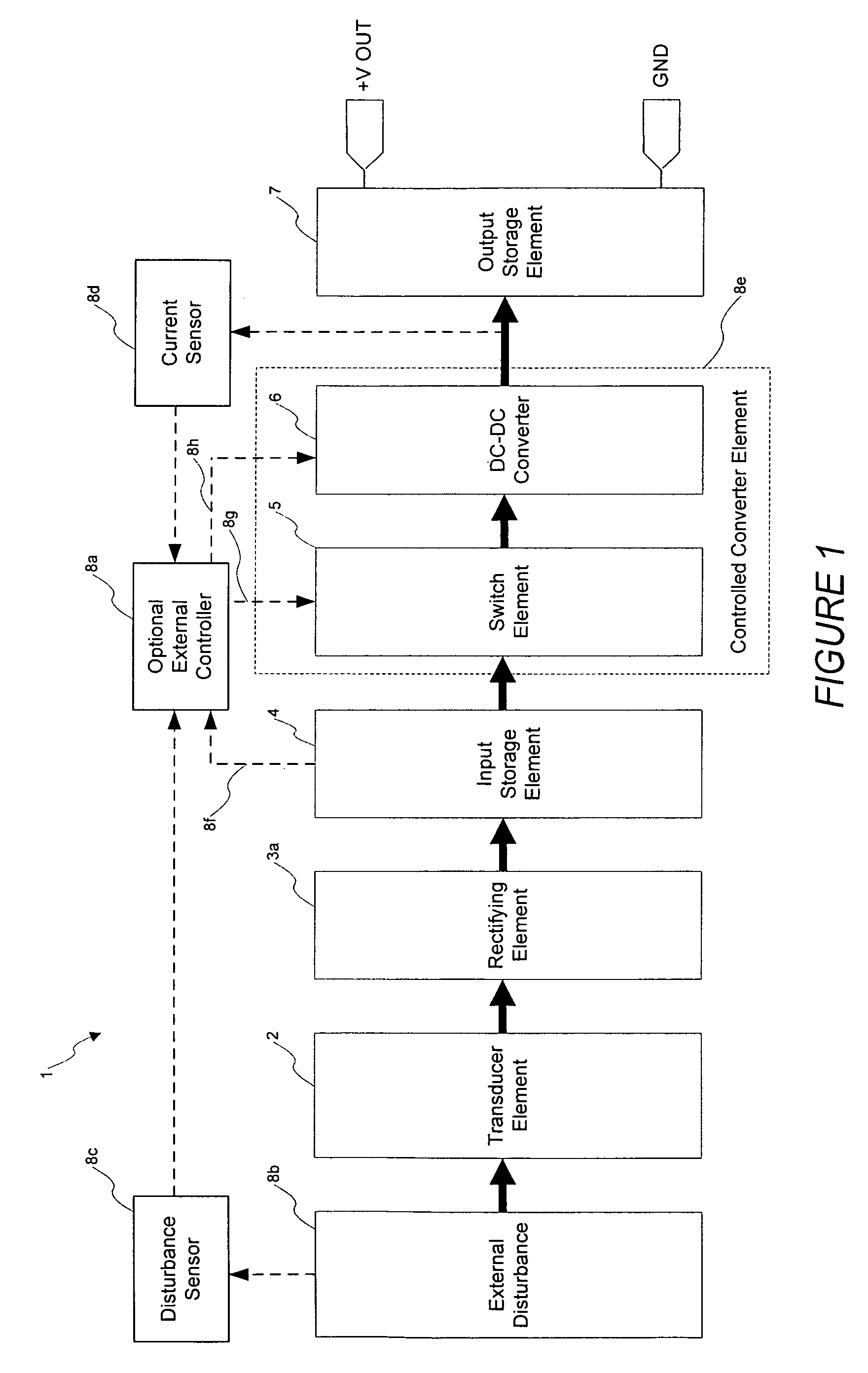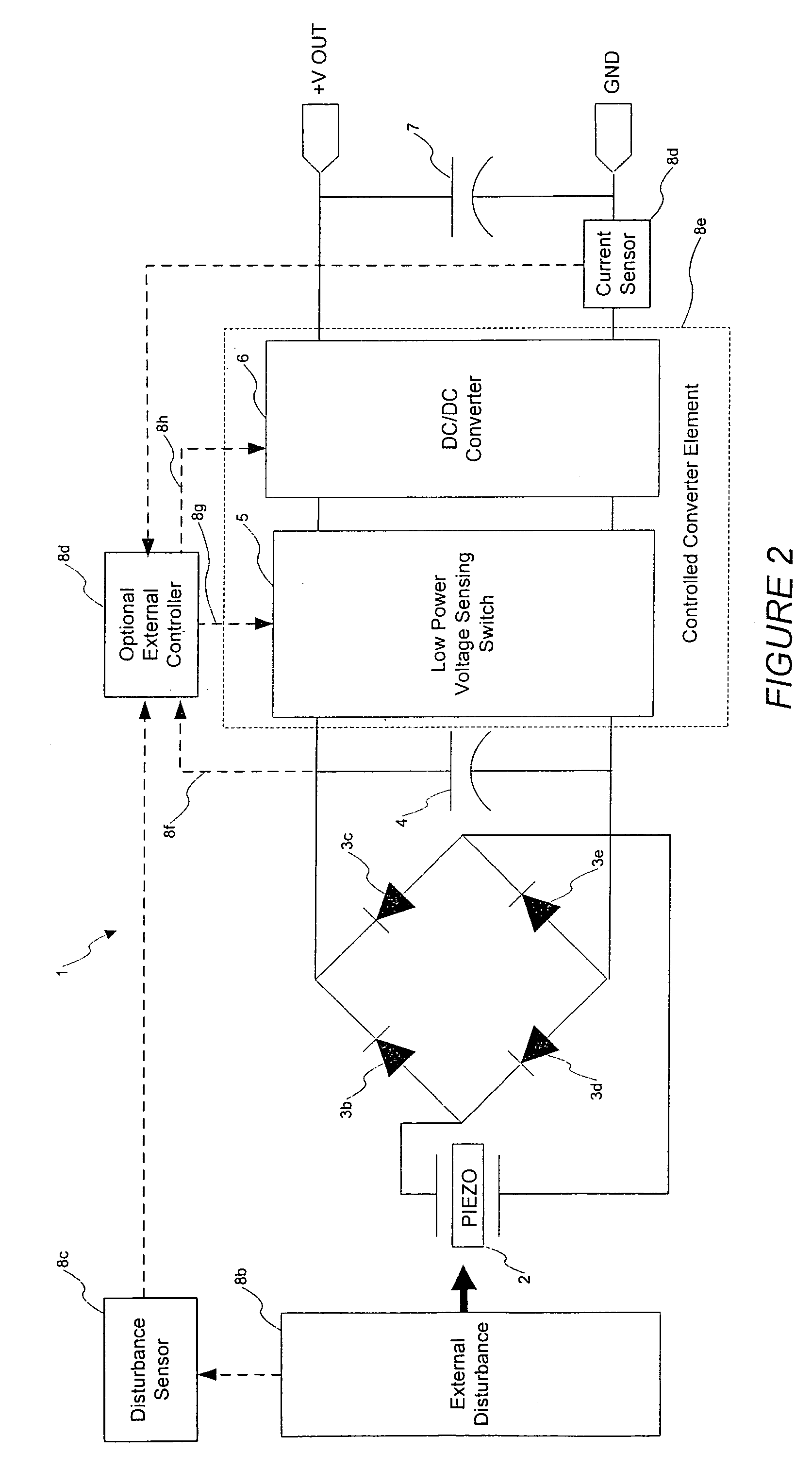System for optimal energy harvesting and storage from an electromechanical transducer
- Summary
- Abstract
- Description
- Claims
- Application Information
AI Technical Summary
Benefits of technology
Problems solved by technology
Method used
Image
Examples
Embodiment Construction
[0022]A description of preferred embodiments of the invention follows.
[0023]The invention relates to an electrical circuit for optimally harvesting, storing and transferring power generated by mechanical disturbances to an electrical load. The power harvesting circuit efficiently collects and stores energy from mechanical disturbances in an input storage element. The accumulated energy is then converted using a controlled DC—DC converter to the optimal voltage level for the load electronics. The circuit invention thus accumulates and stores energy in the optimal voltage range of the transducer, while delivering the energy at the optimal voltage for the final load at the optimal output voltage.
[0024]A block diagram of one embodiment of the invention is shown in FIG. 1. The circuit 1 is coupled to consists of a mechanical disturbance 8b, and included a electromechanical (possibly piezoelectric) transducer 2, a rectifying bridge made up of diodes 3a, an input storage element 4, a contr...
PUM
 Login to View More
Login to View More Abstract
Description
Claims
Application Information
 Login to View More
Login to View More - R&D
- Intellectual Property
- Life Sciences
- Materials
- Tech Scout
- Unparalleled Data Quality
- Higher Quality Content
- 60% Fewer Hallucinations
Browse by: Latest US Patents, China's latest patents, Technical Efficacy Thesaurus, Application Domain, Technology Topic, Popular Technical Reports.
© 2025 PatSnap. All rights reserved.Legal|Privacy policy|Modern Slavery Act Transparency Statement|Sitemap|About US| Contact US: help@patsnap.com



